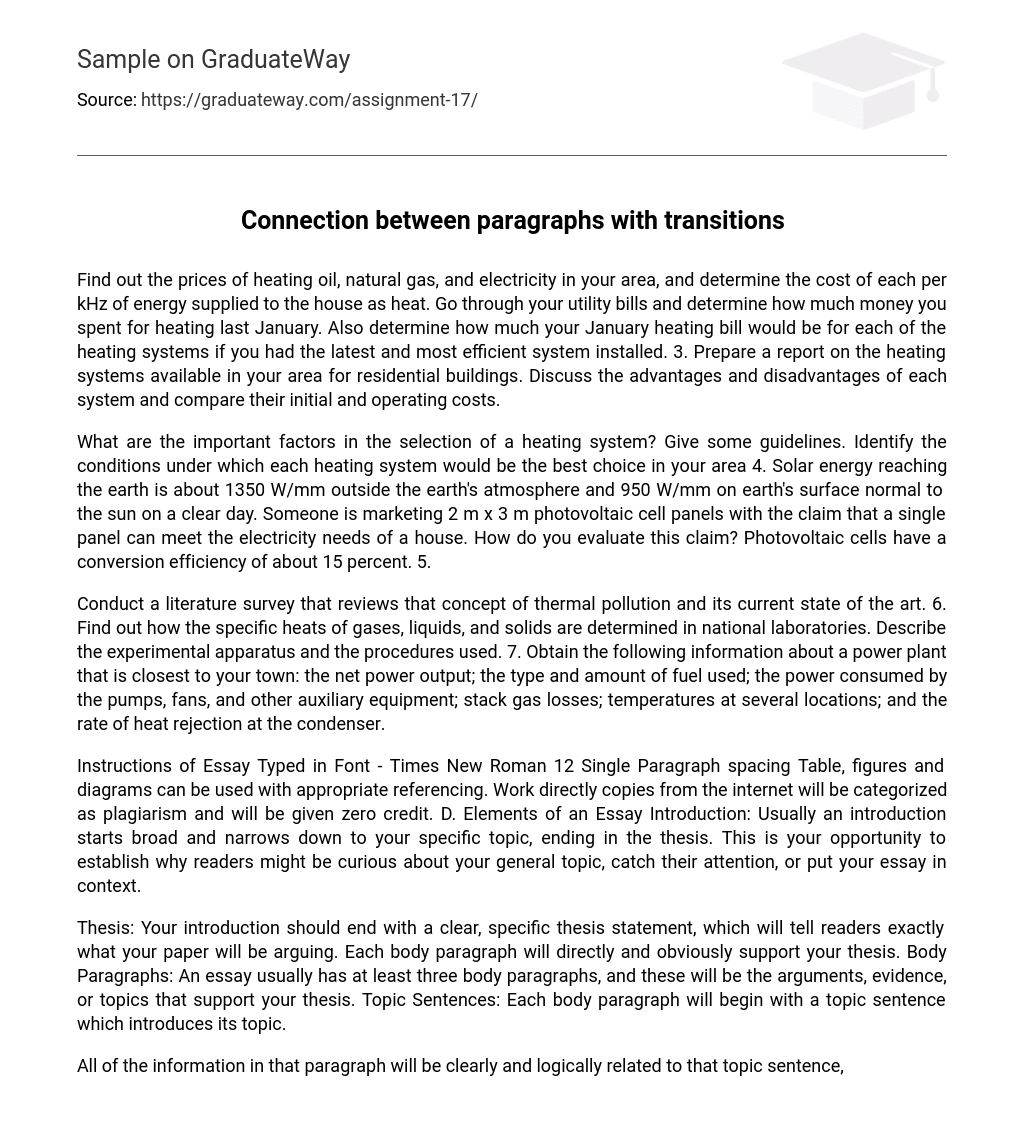Find out the prices of heating oil, natural gas, and electricity in your area, and determine the cost of each per kHz of energy supplied to the house as heat. Go through your utility bills and determine how much money you spent for heating last January. Also determine how much your January heating bill would be for each of the heating systems if you had the latest and most efficient system installed. 3. Prepare a report on the heating systems available in your area for residential buildings. Discuss the advantages and disadvantages of each system and compare their initial and operating costs.
What are the important factors in the selection of a heating system? Give some guidelines. Identify the conditions under which each heating system would be the best choice in your area 4. Solar energy reaching the earth is about 1350 W/mm outside the earth’s atmosphere and 950 W/mm on earth’s surface normal to the sun on a clear day. Someone is marketing 2 m x 3 m photovoltaic cell panels with the claim that a single panel can meet the electricity needs of a house. How do you evaluate this claim? Photovoltaic cells have a conversion efficiency of about 15 percent. 5.
Conduct a literature survey that reviews that concept of thermal pollution and its current state of the art. 6. Find out how the specific heats of gases, liquids, and solids are determined in national laboratories. Describe the experimental apparatus and the procedures used. 7. Obtain the following information about a power plant that is closest to your town: the net power output; the type and amount of fuel used; the power consumed by the pumps, fans, and other auxiliary equipment; stack gas losses; temperatures at several locations; and the rate of heat rejection at the condenser.
Instructions of Essay Typed in Font – Times New Roman 12 Single Paragraph spacing Table, figures and diagrams can be used with appropriate referencing. Work directly copies from the internet will be categorized as plagiarism and will be given zero credit. D. Elements of an Essay Introduction: Usually an introduction starts broad and narrows down to your specific topic, ending in the thesis. This is your opportunity to establish why readers might be curious about your general topic, catch their attention, or put your essay in context.
Thesis: Your introduction should end with a clear, specific thesis statement, which will tell readers exactly what your paper will be arguing. Each body paragraph will directly and obviously support your thesis. Body Paragraphs: An essay usually has at least three body paragraphs, and these will be the arguments, evidence, or topics that support your thesis. Topic Sentences: Each body paragraph will begin with a topic sentence which introduces its topic.
All of the information in that paragraph will be clearly and logically related to that topic sentence, which in turn should obviously relate to the thesis. Support: You use arguments, data, facts, analysis, quotes, anecdotes, examples, details, etc. To support your topic sentences and flesh out your body paragraphs. A good rule of thumb is to have at least three points to support each topic sentence. Transitions: An effective essay will show the connection between paragraphs with transitions.





